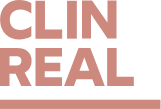Natural modulation of PAR-2 and TLR2: Application to clinical acne skin care
- Acné
Inflammation plays a central role in acne. A global acne skin care product has been formulated with active principles: quinoa peptides (natural PAR-2 modulator), 5-alfa avocuta, zinc gluconate, capryloyl glycine, and long lasting alfa hydroxy acid derived. In vitro studies on 5-alfa avocuta in dermal fibroblasts significantly inhibited type 1 5-alfa reductase activity (-49%). In […]
Inflammation plays a central role in acne. A global acne skin care product has been formulated with active principles: quinoa peptides (natural PAR-2 modulator), 5-alfa avocuta, zinc gluconate, capryloyl glycine, and long lasting alfa hydroxy acid derived. In vitro studies on 5-alfa avocuta in dermal fibroblasts significantly inhibited type 1 5-alfa reductase activity (-49%). In keratinocytes treated with a synthetic TLR2 (Toll-like receptor) ligand mimicking Propinobacterium acnes lipoprotein, it reduced the TLR2 gene overexpression (-52%), contributing to counteract the P acnes–induced inflammatory cascade. Quantification of UV P acnes–derived porphyrines fluorescence 22 acneic patients, aged 11 to 40, applied the tested product twice a day for 30 days during an open study. VISIA CR coupled to computerized analysis demonstrated a 30% decrease of bacterial activity. A single blind comparative randomized study performed under dermatologic control included 126 female patients (15-35 years old) with light to moderate acne (≤12 retentional and 5 to 9 inflammatory lesions). Sixty-four applied tested product and 62 a referenced product twice daily for 90 days. There were no statistic difference between both groups at D45 and D90. Tested product decreased inflammatory (respectively -50% and -70.3%) and retentional (-40.2%/-57.3%) lesions (P < .01). Investigator Global Assessment (IGA) confirmed an improvement in 89% of patients, 79.6% ≥ 50%. Seborrhea and postlesional erythema were reduced by 38.5% and 35.1% at D45 (P < .01) and by 56.4% and 51.4% at D90 (P < .01). Tolerance was excellent in 98% of cases. The use of a product targeting key acneic pathways (inflammation receptors, hyperseborrhea, hyperkeratinisation) with active principles from natural technology leads to a significant global improvement in mild to moderate acne.

